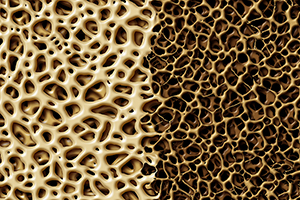



| By Dr. Ronald Hoffman
Sugar Disease is a problem that manifests in different ways in different individuals, of different ages and of different genetic susceptibility-but its three cardinal forms are:
Why call it “Sugar Disease”? The term Sugar Disease is a convenient catch-all for a host of modern conditions that result from an unbridled intake of sugar or refined carbohydrates coupled with a sedentary lifestyle.
Hypoglycemia
Hypoglycemia is low blood sugar. If you ask a conventional physician, hypoglycemia is a rare, practically nonexistent malady. The next time you go to a doctor, try asking him or her if the symptoms you experience are due to hypoglycemia. You will, undoubtedly, evoke a bemused look, perhaps an angry one, and even a referral to a psychiatrist. Or perhaps your doctor will reluctantly perform a glucose tolerance test to humor you. Don’t bother. Glucose tolerance tests, as performed conventionally, are biased to corroborate the point your doctor wants to make. You never had hypoglycemia in the first place!
But the truth is that hypoglycemia is far more prevalent than we’re led to believe. Consider the following array of symptoms: spaciness, fatigue, mood changes, PMS, sugar craving, headaches, difficulty focusing the eyes, tremors, temperamental outbursts, depression, excessive sweating, hot flashes, palpitations, cold extremities, abdominal pain, panic attacks\ and many more.
With such a laundry list of vague and seemingly subjective attributions, no wonder conventional doctors take a dim view of hypoglycemia. But, although legion in its manifestations, hypoglycemia is none the less real.
Why so many symptoms? To learn the answer, we have to explore the physiology of low blood sugar.
The body is designed to digest, assimilate and utilize three primary nutrients: proteins, fats and carbohydrates. Proteins and fats can be used for energy, but their conversion to usable forms is gradual, not immediate. That is why athletes on low carbohydrate diets often suffer an energy brown-out–they perform less well than when provided with fuel in the readily usable form of carbohydrate.
Carbohydrates are all more or less readily digested into sugar. Their rate of conversion to sugar depends on their complexity. Complex carbohydrates such as beans, provide a slow time-release of the sugar they contain in complex molecules of starch intercalated with fiber. The presence of natural “starch-blockers” in beans further slows the sugar liberation process.
On the other hand, sugars and refined carbohydrates provide a rapid sugar fix. This results in an immediate, pleasant sense of gratification–sometimes associated with mild drowsiness. It’s the familiar sugar high. But then, in response, the body calls upon its insulin reserves, generated in the pancreas, to lower the blood sugar. This often happens precipitously. “What goes up must come down”–sometimes with crashing rapidity.
Experiments have now confirmed what the hypoglycemic person experiences. Low blood sugar triggers hunger–especially carbohydrate craving. In addition, the brain is starved for its preferred fuel–glucose. At rest, the brain consumes 1/3 of the body’s total glucose requirement. The brain is a hungry, rapidly metabolizing organ–and fuel shortages here create problems in concentration, memory and mood.
But perhaps most importantly, low blood sugar triggers an outpouring of counter-regulatory hormones, mostly from the adrenals. These hormones oppose the action of insulin and push blood sugar back up. Unfortunately for the hypoglycemic, these rescue hormones are the very same ones that produce the adrenalin rush of a fight-or-flight reaction. The results are symptoms such as palpitations, sweaty palms, nervousness, tremor and sometimes even full-blown panic attacks.
Syndrome X
Physicians are becoming more aware of nutrition lately, but it often seems like their only advice for preventing heart disease is to avoid cholesterol and saturated fat. Syndrome X explains why some patients on a prudent diet go on to develop heart disease without apparent cause.
Syndrome X was a hot, new concept on the cutting edge of medical research until the 1990’s, but just like cholesterol a decade or so ago, its importance hadn’t yet trickled down to the level of most frontline care deliverers. The syndrome X model envisions not just excess fat and cholesterol but also plentiful carbohydrates–especially the refined ones-as keys to the process of arteriosclerosis.
How could that be? Remember the insulin surge we get with sugar intake? Replicate that surge a few hundred thousand times over the course of a lifetime and you end up with an overly sensitive insulin trigger and chronically elevated insulin. Why is that bad?
Consider these adverse effects of too much insulin:
It’s the latter that leads to the most common form of diabetes we see in the industrialized world: adult-onset diabetes. The preferred term these days is non-insulin-dependent diabetes (NIDDM), because increasingly we’re seeing overweight, sedentary kids with the disease.
Small wonder, then, that syndrome X leads to heart disease and may, in fact, be the most prevalent cause of degenerative disease and premature death in modern society.
How can you tell if you have syndrome X? A variation on the standard glucose tolerance test called the glucose/insulin tolerance test (see below) will confirm it, but there are easier ways to tell. An elevation of triglycerides on a fasting blood test should alert your doctor to the fact that you’re syndrome X-prone. Or even simpler, a quick tape measurement of waist-to-hip circumference in men should be no greater than 1.0; in women, no greater than 0.8. If it’s greater, you’ve got the “central adiposity” that’s a hallmark of syndrome X.
Diabetes
Diabetes comes in two varieties, type I and type II. The former results from the body’s failure to produce insulin–the latter usually from an overabundance of insulin. Both respond well to the measures I outline below for controlling Sugar Disease in general. But diabetes is a condition with its own special requirements for therapy. Many patients with diabetes have advanced circulatory damage that cannot be reversed simply with nutritional measures or exercise.
Restoration of circulation can be accomplished with chelation therapy. Utilizing intravenous drips of a special substance called EDTA, the arteriosclerotic process affecting blood vessel walls can be decisively halted and even reversed. It has been my experience that loss of sensation, amputations, leg pain called claudication, strokes, angina and heart attacks can be prevented.
Determining if you have Sugar Disease
As mentioned before, the glucose tolerance test (GTT), even if performed for six consecutive hours, may sometimes provide the mistaken reassurance that a patient does not suffer from Sugar Disease. Even patients who are devastated by the effects of the sugar challenge used in the GTT are often told not to worry, that they have no problem or that their symptoms have no real basis. The answer lies in designing a better, more sensitive GTT.
How is that accomplished? By not only measuring blood sugar at each of several designated times, but also measuring the body’s insulin response, as well as the production of adrenalin at the crucial instant where blood sugar “bottoms out” and symptoms occur. This assures that even when glucose levels are normal, any abnormality in metabolism will be appreciated. A hypoglycemia quotient can be calculated, also, by applying a mathematical formula to the glucose results obtained. The result: more accurate testing for hypoglycemia, syndrome X and unsuspected diabetic susceptibility.
The glycemic index: key to diet for Sugar Disease
Some have proposed that persons with variants of Sugar Disease follow a diet that rigidly excludes carbohydrates, concentrating instead on meat and vegetables. In my opinion this is rarely necessary and results in dietary imbalances. But how do we recognize which carbohydrates to emphasize, and which to restrict?
The answer lies in the glycemic index (GI). The GI is the result of nutritional research and seeks to precisely define the ability of a given carbohydrate food to liberate sugar and trigger an insulin response. In general, the more complex a carbohydrate, the lower its glycemic index. Beans, for example, while carbohydrate- laden are low. Table sugar, of course, is high.
But there are some surprises on the GI list that defy intuition. For example, corn, a perfectly acceptable natural vegetable, is quite high on the GI. So are potatoes, especially the processed, mashed kind. So are juices, most fruits, breads and muffins (even whole grain, high-fiber types) and even milk and yogurt (which contain milk sugar). Surprising to some is the fact that dried fruit, despite its naturalness, has a virtually identical GI to commercial candy.
The message is that not all that emanates from the health food store is beneficial for patients with Sugar Disease. What’s left? Legumes and whole grains in their unmilled form–such as brown rice millet, barley. bulghur, rolled oats, amaranth and quinoa. A cardinal rule: Live as if the flour mill had never been invented!
In addition, frequent small meals keep blood sugar fluctuations to a minimum and conserve insulin. These guidelines are embodied in the “Salad and Salmon” diet which is designed for patients with Sugar Disease.
Good fats
While fats are high in calories, in the treatment of Sugar Disease there are “good guy” fats and “bad guy” fats. Those that are saturated, such as those found in modern feedlot-raised livestock, hasten the development of Sugar Disease. In addition, artificial fats such as margarine and hydrogenated oils impair the body’s carbohydrate metabolism while adding unwanted pounds.
Conversely, omega-3 oils such as those found in flax and cold-water fish including salmon, trout and tuna, help curb insulin resistance. Monounsaturated fats, found in olive, canola, walnut and grapeseed oils also help adjust blood sugar.
Supplements
A key supplement for treating Sugar Disease is chromium. A question that I frequently get is: “If chromium is helpful in diabetes, how can it be helpful for the opposite condition–hypoglycemia?” The answer lies in the unique ability of chromium to enhance the action of insulin, allowing the body to step down its production of the critical hormone. This results in fewer highs and lows. The preferred form is polynicotinate. Alpha-lipoic acid also is helpful for heading off insulin resistance.
A variety of herbs help maintain blood sugar, and even attenuate sugar craving. One is Gymnema sylvestre, the anceint Ayurvedic “Sugar Destroyer”; Stevia, an Amazonian herb, which is a sweet non-caloric sugar equivalent; the ordinary kitchen spice cinnamon; and fenugreek.
Exercise
Exercise is a great “leveler” for persons with Sugar Disease. Studies show that mild, regular aerobic exercise of short duration–like power-walking 20 minutes a day–can forestall the development of diabetes in susceptible individuals or reverse it when it has already occurred. I’ve found aerobic exercise helpful, too, for hypoglycemics-it helps to stabilize troublesome nervous system instability and makes patients more resilient. And exercise is certainly an antidote to mid-abdominal weight gain, which is a hallmark of syndrome X.
To read more about the Hoffman Center, see “The Center”
To contact us
Call 212-779-1744 or e-mail patients@drhoffman.net
We are located at:
776 Sixth Avenue (Between 26th and 27th streets)
Suite 4B
New York, New York 10001 (Chelsea neighborhood of Manhattan)
To read other articles about metabolic syndrome click here:
How does Dr. Hoffman treat metabolic syndrome?
Glucose tolerance test (GTT)-“Why do I need a GTT?”
How sweet it is: an examination of alternatives to sugar
Though we think of declining estrogen as the hallmark of menopause, it's actually common for…

Up to 12 percent of Americans have ulcers at some point in life. Peptic ulcers…
Gallbladder disease is a modern illness. An estimated 20 million Americans have gallbladder disease. The…

Lately, I’ve been sharing with Intelligent Medicine listeners that I’ve been augmenting my diet with…

Q: I am a 77-year-old woman. On recent bone density test, lumbar spine results range…

The 1973 sci-fi movie Soylent Green depicts a dystopian future in which over-population and environmental…

Leyla Weighs In: Exploring Yoga’s Therapeutic Role in Neurological Disorders

Our virtual voicemail is open 24/7, so there's no need to wait to submit your questions for Dr. Hoffman. Leave a message, and you may hear your question featured on the Intelligent Medicine radio program!